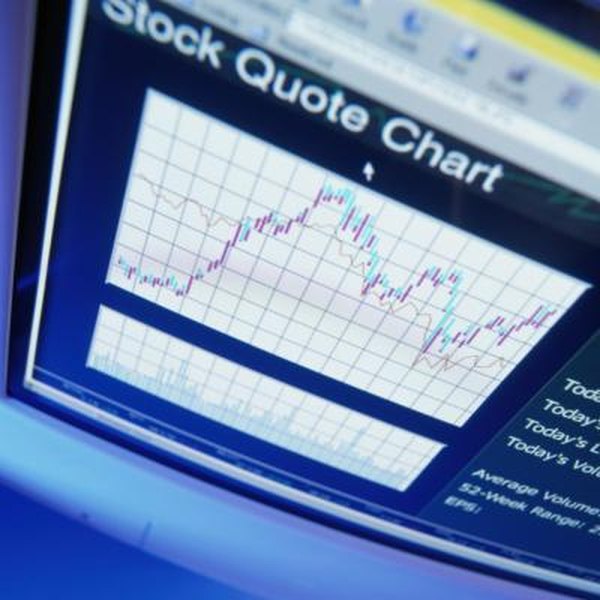How Does High Frequency Trading Work?
High-frequency trading happens faster than you can read a stock chart.
Duncan Smith/Photodisc/Getty Images
Suppose you expected the price of a stock to rise by a penny for two seconds and then drop back down -- the kind of wobble that occurs countless times each day on financial markets. Now suppose you were able to buy 1 million shares a split second before the rise and then sell them a split second afterward. You'd make $10,000 in two seconds. That, in a nutshell, is how high-frequency trading works.
Concept
High-frequency trading involves buying and selling securities such as stocks at extremely high speeds. Traders may hold the shares they buy for only a fraction of a second before selling them again. According to "The Wall Street Journal," transactions can be measured in microseconds, or millionths of a second. The purpose is to make a profit off even the smallest changes in prices. Making such trades over and over -- the "high-frequency" in the term -- can theoretically generate millions in profits a fraction of a cent at a time. The securities industry estimates that high-frequency trading accounts for more than half of all volume in the stock market.
Execution
People aren't nearly fast enough to conduct high-frequency trading. In the time it would take a human trader to reach for the phone or make a mouse click on a computer, a profit opportunity could come and go. High-frequency trading is all done with computers. Not only do the computers execute trades, but they also make the decision about which trades to make without human involvement. Firms that practice high-frequency trading program their computers to search for signals about price movements and then act on those signals.
Rebates
High-frequency traders don't just profit from movements in share prices. They also collect rebates that stock exchanges offer to certain traders for providing liquidity -- that is, making themselves available to buy or sell shares so orders coming into the exchange can be filled quickly. Rebates are tiny -- fractions of a penny per share -- but when millions of shares are involved, they add up quickly. High-frequency traders can generate rebates by taking both sides of the same trade, essentially creating demand and then meeting it.
Traders
You can't get involved in high-frequency trading with a laptop, off-the-shelf software and an Internet connection at a coffee shop. Firms that engage in high-frequency trading use supercomputers specially designed for these kinds of transactions, and they often have direct access to exchanges using their brokers' accounts -- referred to as "naked access." Big Wall Street firms engage in high-frequency trading, but it's been more common at hedge funds and specialty firms set up specifically for this kind of trading.
Risks
It doesn't take a lot of imagination to envision a scenario in which something bad could come of computers trading millions of shares without human oversight. Indeed, in 2010, high-frequency trading was fingered as a culprit in a "flash crash" that wiped out hundreds of billions of dollars of market value, albeit temporarily. In 2012, the high-frequency firm Knight Capital Group lost nearly half a billion dollars when its computers zigged when they should have zagged. Such cases prompted both exchanges and regulators to pledge greater oversight.
References
Writer Bio
Cam Merritt is a writer and editor specializing in business, personal finance and home design. He has contributed to USA Today, The Des Moines Register and Better Homes and Gardens"publications. Merritt has a journalism degree from Drake University and is pursuing an MBA from the University of Iowa.

